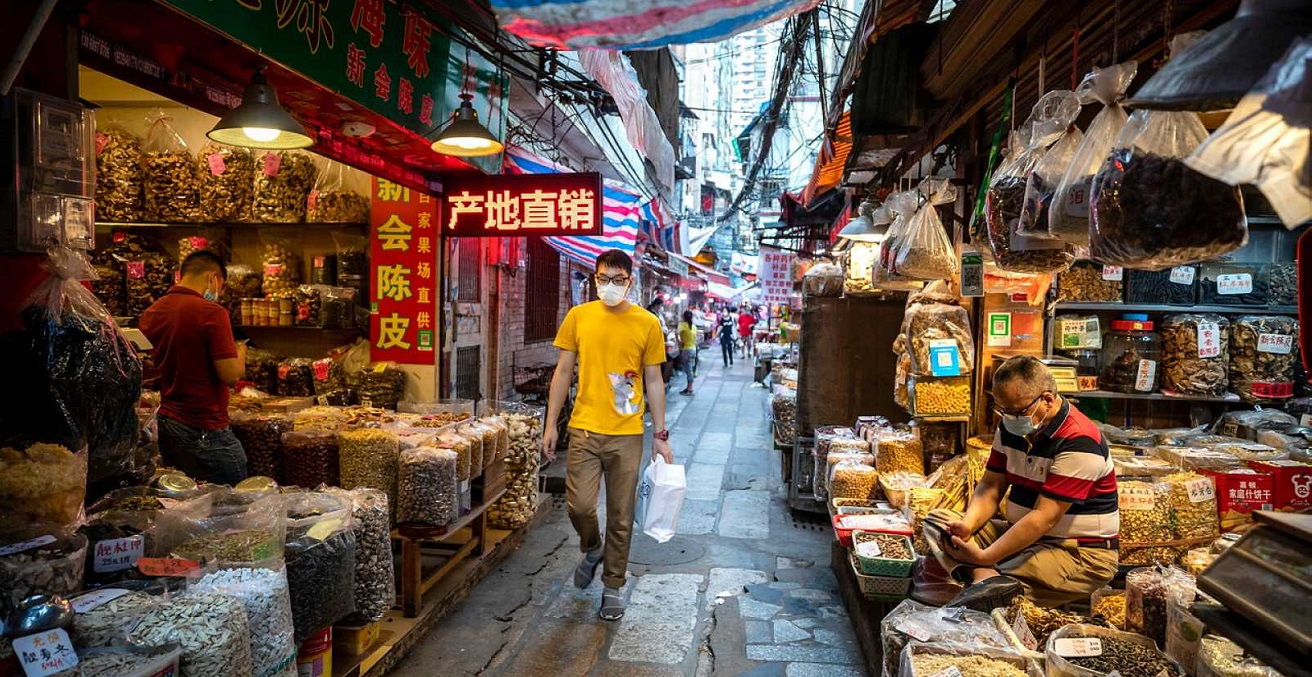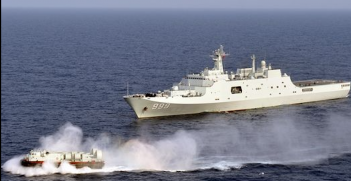China, COVID-19, and Developing Geopolitical Outlines

The global narrative of COVID-19 has been and will continue to be shaped by China. As the effects of the pandemic continue, China is pushing the boundaries of its power in a way that could have lasting effects on global geopolitics.
The COVID-19 outbreak has simultaneously pushed the globe into a human health crisis and led to an extraordinary shrinking of world economies. Furthermore, it has inflicted unimaginable socio-psychological trauma, the scars of which will remain etched on the psyche of present and future generations. However, human emotion has prevailed over the sense of ephemerality of life that should otherwise have introduced reasonability and moderation to international politics. The power-hungry nature of humans is unable to suspend old grudges, even temporarily.
Visualising a post-COVID-19 world
As the world is still struggling to exit from the pandemonium of the pandemic, it is difficult to envisage a post-COVID-19 world. An understanding of the post-COVID-19 geopolitical situation will require waiting until a picture of the global economic recovery becomes clear. It will be affected by the result of the US presidential elections scheduled for later this year, and the policy changes towards China this might entail. Regardless, the geopolitical discourse in the wake of COVID-19 will continue to revolve around China as it did before the outbreak – now perhaps even more intensely.
China and the global narrative on COVID-19
The global narrative of COVID-19 is rightly China-centric. This narrative has had two sides: first, how the world has perceived the outbreak and China’s responsibility for failing to contain it; and second, how China has subsequently reacted.
Resentment in the international community has arisen from what they see as China’s inept handling of the outbreak in its initial stages. This resentment has been most apparent in Europe and the US, who have borne the brunt of cases. They accuse China of suppressing or failing to share information about the virus in a timely manner.
COVID-19 has taken a particular toll on China-US relations. Their relationship, which was already deteriorating in terms of trade, has worsened further. President Trump has levelled every possible charge against China regarding its culpability in the outbreak. His withdrawal from the World Health Organization (WHO) was centred on an accusation that the organisation is “hand-in-glove” with China. Furthermore, Trump’s reversal of Hong Kong’s “special status” in response to China’s new security law highlights the level to which US-China ties have deteriorated.
In the meantime, China’s response to the global narrative on coronavirus has evolved significantly. It began defensively, inducing a perception of guilt. Then, China began trying to project its effective handling of the situation by restoring normalcy and helping other countries with their response. As leading democracies continued to struggle in their fight against the pandemic, China continued to project the superiority of its system and values.
While the US and its allies remain discordant, China’s ability to shape a narrative through aid and assistance to smaller countries in Eastern and Southern Europe, Southeast Asia, and Africa cannot be ignored. One cannot forget that the WHO’s unanimous resolution calling for an inquiry into the outbreak made no mention of China. Despite fierce support from the US and its allies, Taiwan’s bid for an invitation to the World Health Assembly of the WHO failed. China’s success at the WHO shows its heft in multilateral organisations has increased. It is the US that finally withdrew from the WHO.
Troubling Signals
On the face of it, it appears China has come out unscathed from the pandemic, holding onto the position it had carved before the pandemic hit. However, a closer look at the Chinese government’s behaviour throws up some troubling indicators. The government has indulged in confrontations that confuse global perceptions of the Chinese regime. It has enacted a new security law for Hong Kong, raising serious questions about Hong Kong’s autonomy. This process invited a sharp reaction from the US, and expressions of concern from the G-7 countries. In the South China Sea, China’s aggression has intensified despite the pandemic. China rammed a Vietnamese fishing boat in the second week of June. Countries like Indonesia, Malaysia, and the Philippines, who have been amenable to the Chinese in the South China Sea in the past, are taking another look at their positions. “Tensions have re-escalated” between Japan and China, as the former accused the latter of harassing its boats in disputed areas in the East China Sea. The Chinese Air Force have alarmingly increased manoeuvres near Taiwan since January 2020. In June 2020, Chinese fighter planes repeatedly violated Taiwan’s air defence identification zone. China’s military build-up on the Himalayan border with India from early May 2020 led to bloodshed on 15 and 16 June, 2020, the first time since 1975. India did not harm Chinese interests at the WHO during the US-China standoff on COVID-19, or any other issue between them, such as Taiwan, Hong Kong, and Xinjiang. In fact, India’s silence helped China, making China’s military movements unexpected.
Possible Interpretations
How do we interpret China’s aggression while the world continues to live through this pandemic? Is President Xi Jinping, and the Communist Party of China (CPC), playing to the gallery domestically by giving assurances about the country’s capabilities? Is the Chinese regime feeling the pressure of Trump’s strong stance and misreading the situation as a consequence? China has generally shown a tendency to pick squabbles with one adversary at a time, while keeping others at bay, to ensure their opposers don’t unite against them. Their behaviour presently is astonishing. One wonders what has happened to its millennia-long native wisdom of not handling its all the adversaries at once, or master diplomat Zhou Enlai’s legacy of “persuasion and compromise” that emphasised avoiding isolation, building solidarity, and dividing adversaries.
China has not shown strong adversarial motives towards India in recent decades and has been worried about India getting closer to the US. Despite their widely noted imperious attitude, staying engaged with India was China’s preferred policy. Supposedly, opening a front with India was to take care of far-fetched concerns about India’s internal moves involving former state, Jammu and Kashmir (now union territories of Jammu and Kashmir, and Ladakh) and infrastructure-building within Ladakh. Alongside fronts in Hong Kong, the South China Sea, the East China Sea, and Taiwan, this may imply a lack of coordination or disorientation in China’s present strategy.
Finally, it is also possible that 2020 is once again a cut-off moment for China, as in 2008. China’s economic performance despite the 2008 global recession gave it a new sense of power and confidence and accelerated its abandonment of Deng Xiaoping’s “hide your strength and bide your time” dictum. Similarly, China may be testing an even brighter self-assessment in the wake of COVID-19.
It is not certain which of these interpretations is closest to reality. Maybe all of these interpretations add up to an understanding of Chinese thinking. Regardless, one wonders how this indiscriminate aggression squares with China’s “strategic window of opportunity,” an idea which emphasises the macro-level peace and stability needed to build “a modern socialist country by 2049.”
Conclusion
The COVID-19 global narrative will be marked by China’s use of resources and muscle to increase its influence – perhaps even more in times to come. China is an elephant in the room that no one can pretend to ignore any longer. If China’s present approach persists, it will leave countries which earlier acquiesced to the Sino-US power jostle remaining a grey area with no option but to make a black and white choice. If China is indeed convinced about US resistance against its rise, it is even more important to deal with the situation deftly instead of pushing everyone to the other side.
Prashant Kumar Singh is Associate Fellow at the East Asia Centre, Manohar Parrikar Institute for Defence Studies and Analyses, New Delhi.
This article is published under a Creative Commons Licence and may be republished with attribution.





